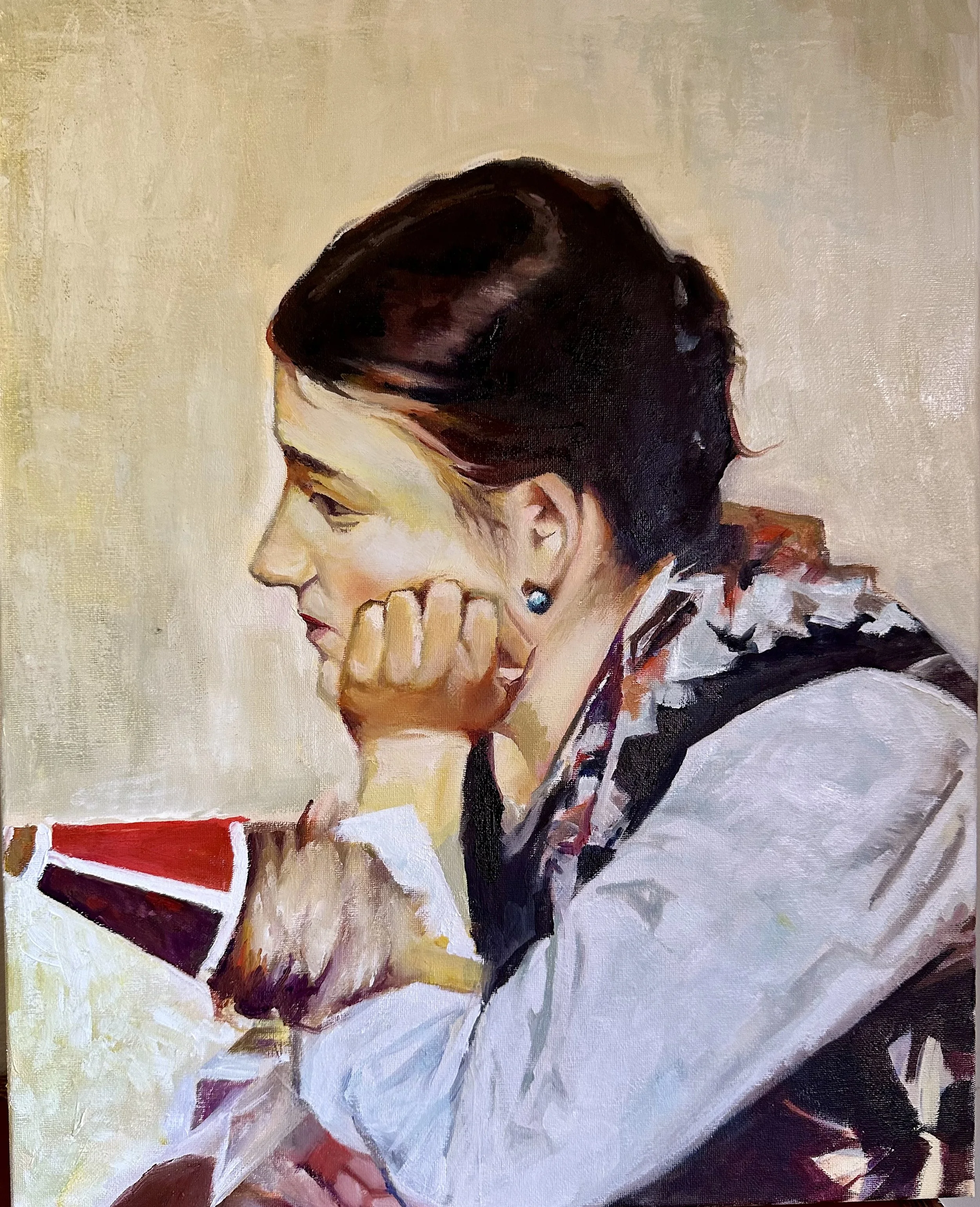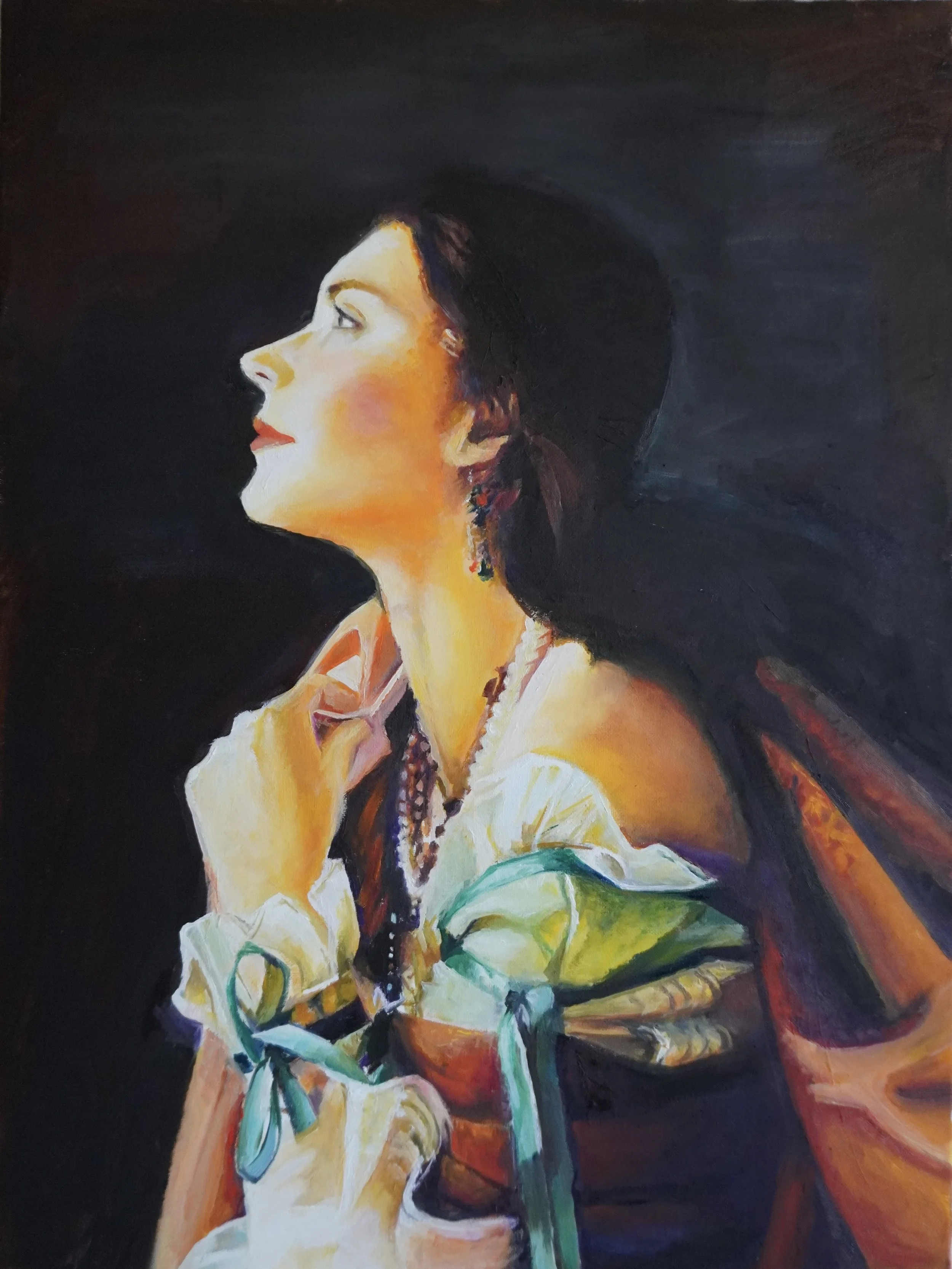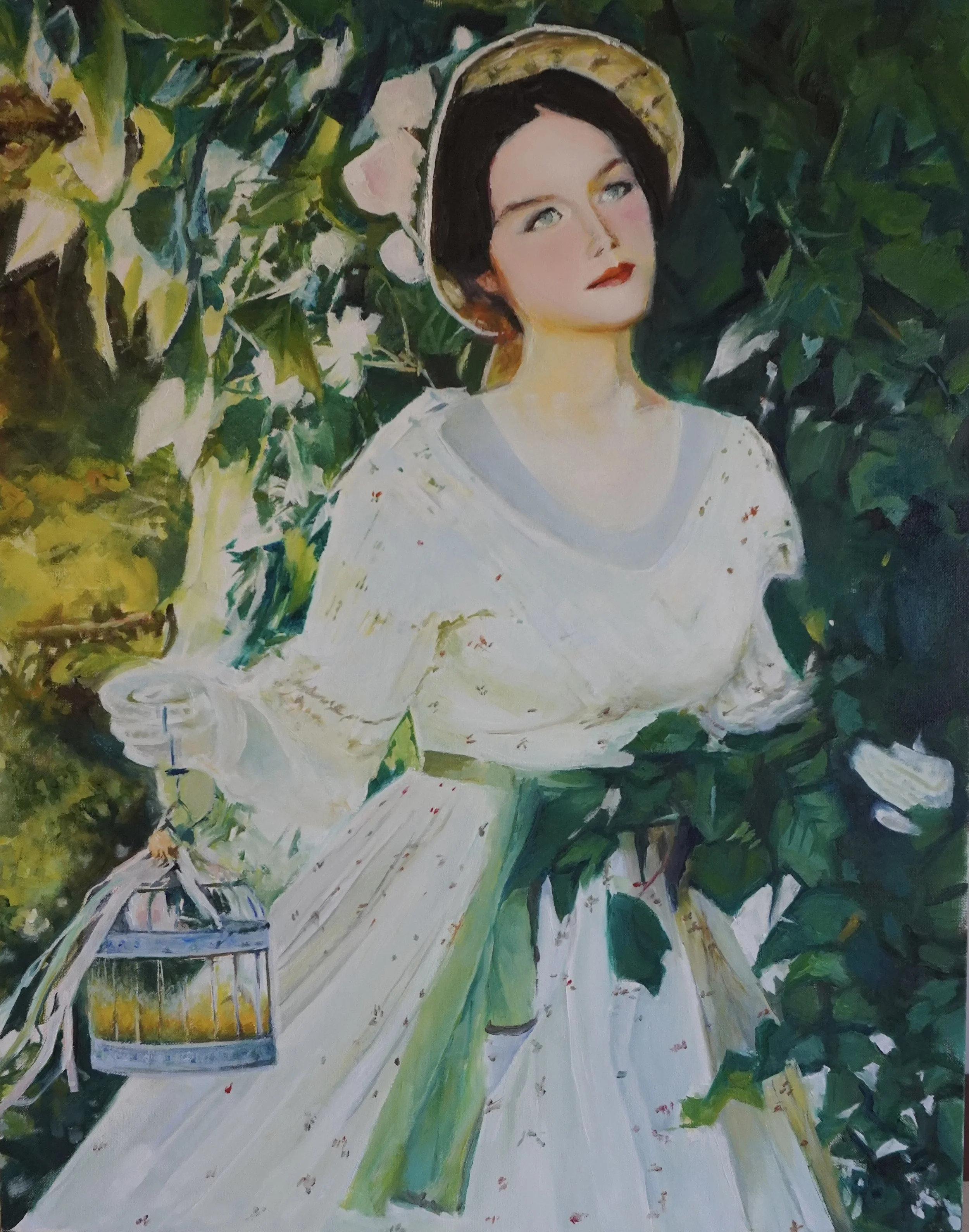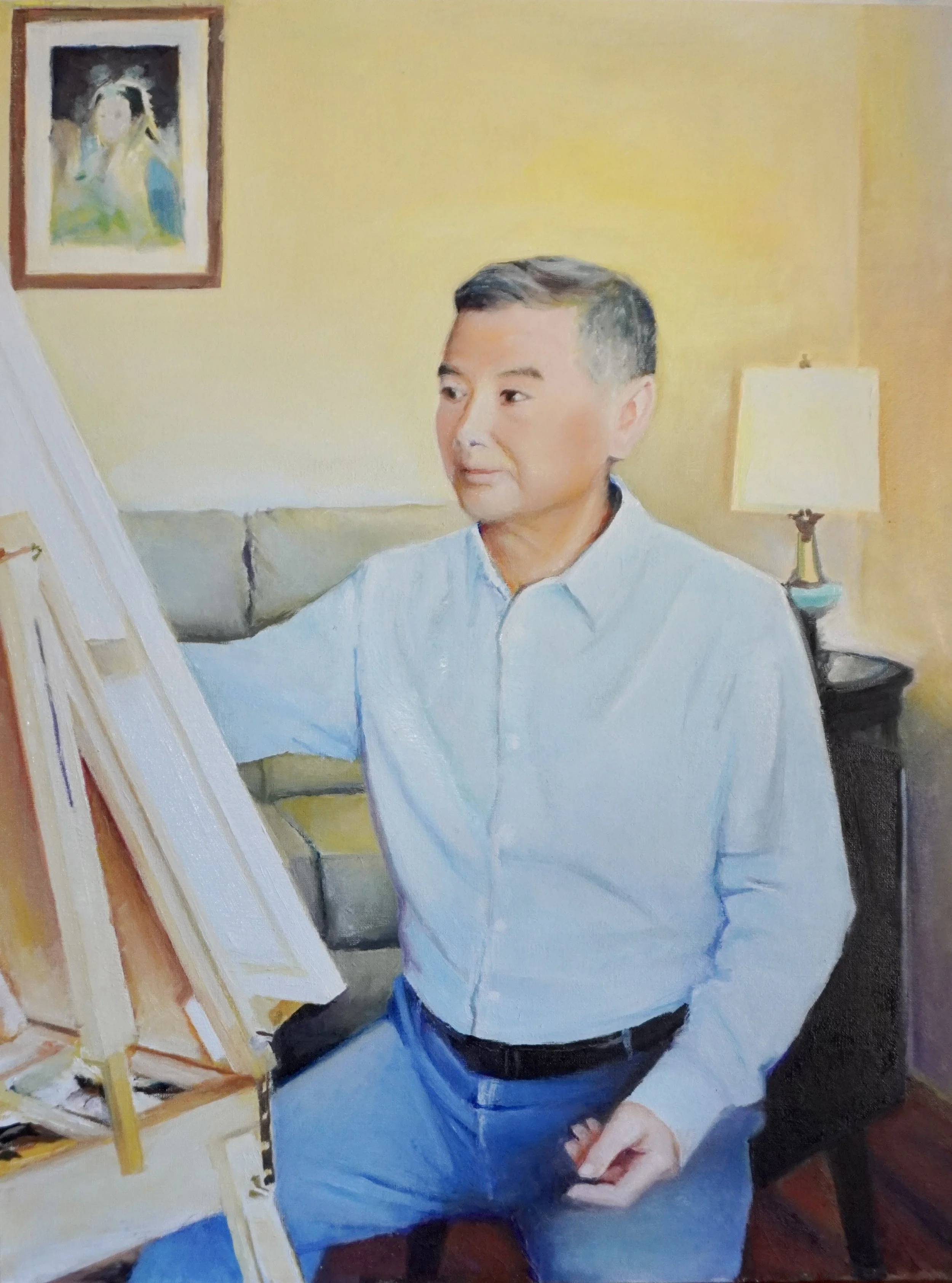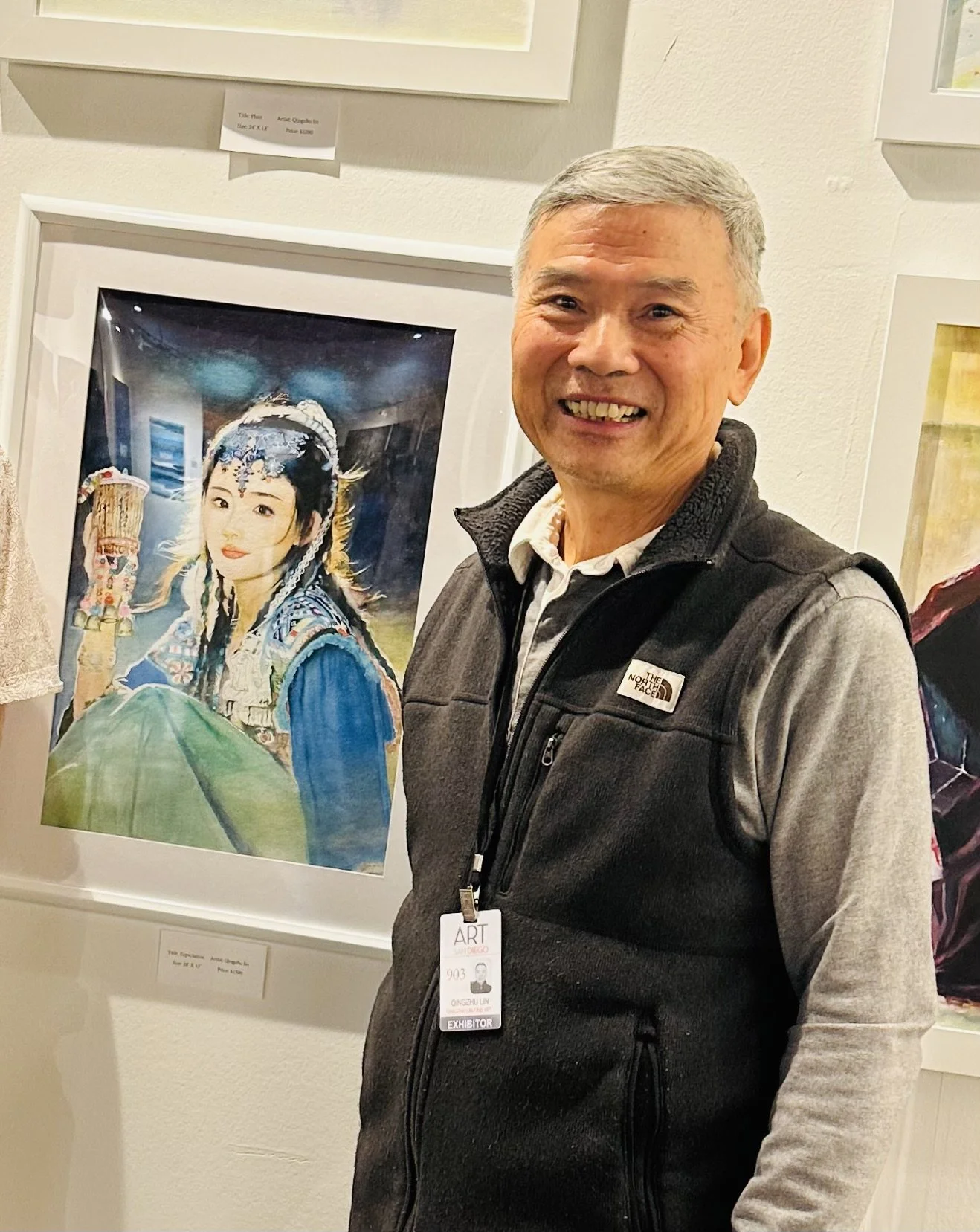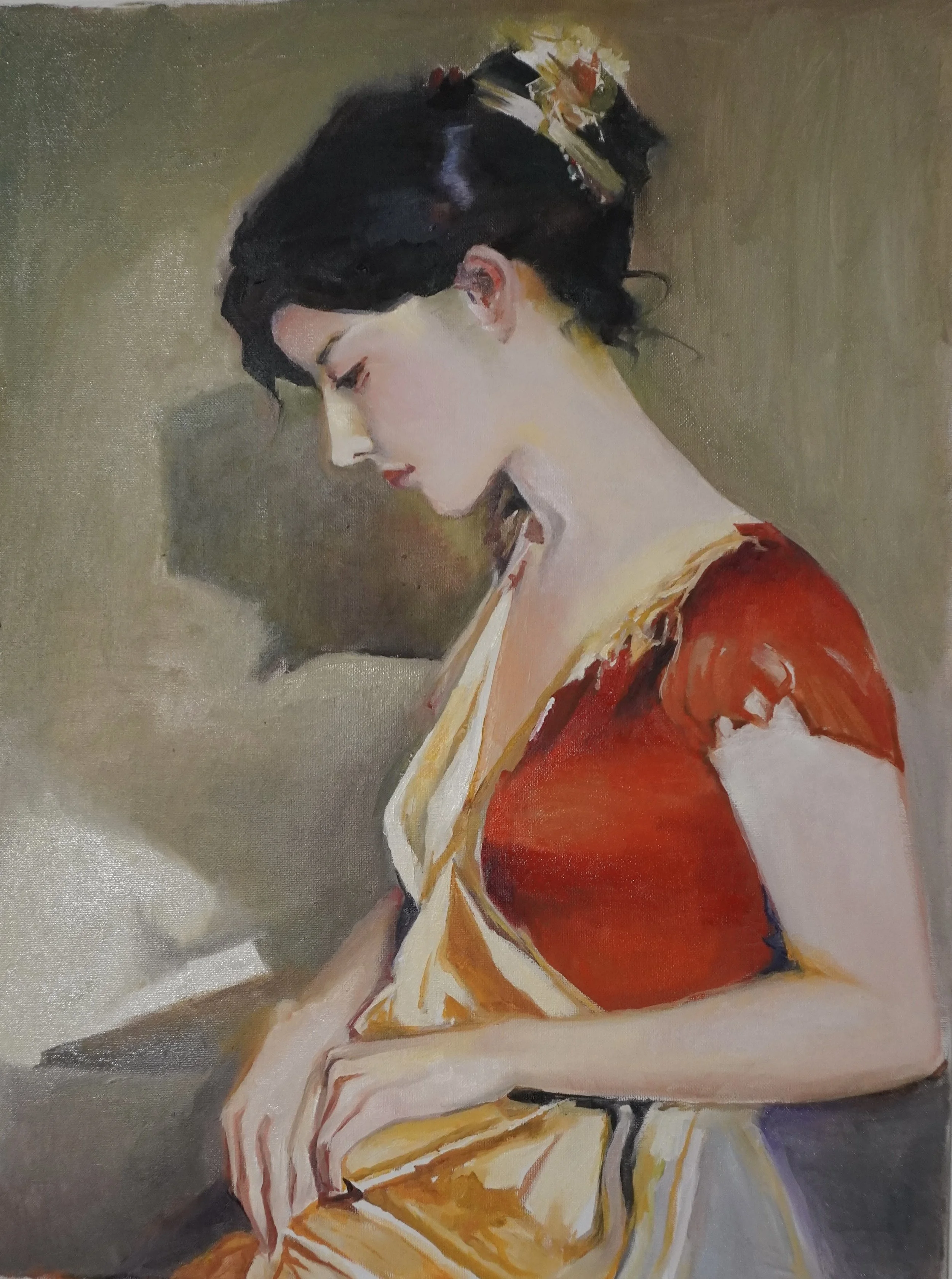Qingzhu Lin
Embarking on a lifelong journey to capture beauty through art, I draw inspiration from the Great Masters of the European Renaissance. My focus lies in creating figurative paintings and landscapes that echo the marvels of the natural world, seamlessly blending tradition with innovation. My artistic voyage traces its roots to the enchanting wonders of childhood memories. The stamps I collected and the vivid recollection of a cherished oil painting adorning my childhood home sparked a profound inspiration within me, igniting a lifelong devotion to the world of art.
Throughout my career, I have eagerly immersed myself in the global art scene through extensive travels. Museums, exhibitions, and galleries became my sanctuaries, offering solace in the pure joy of experiencing art in its myriad forms.
Upon retiring, I embarked on a personal quest to nurture and refine my artistic talent, endeavoring to express the beauty that surrounds us. Exploring new techniques and honing my skills, each brushstroke became a testament to my unwavering commitment to capturing the essence of beauty and sharing my unique artistic perspective.
My portfolio stands as a testament to my dedication, influenced by both my Chinese heritage and the aesthetics of the Renaissance. My paintings embody a harmonious fusion of styles, cultures, and influences. Inspired by Leonardo Da Vinci’s meticulous attention to the human figure, my portraits captivate viewers, revealing my meticulousness and commitment to portraying the spirit of my subjects.
Additionally, my art celebrates the characteristics of Chinese painting, reflecting my deep-rooted connection to my cultural heritage. By primarily focusing on portraits and landscapes, I express my affinity for traditional subjects. Employing delicate brushwork reminiscent of traditional Chinese ink paintings, I skillfully imbue depth and form into my lines using oil and watercolor paints.
Renowned art curator Roberta Desolati aptly describes my works as a harmonious blend of styles, cultures, and influences. My paintings resonate with both Eastern and Western traditions, bridging the gap between artistic legacies. Through masterful brushwork, I strive to capture the essence of beauty and breathe life into my creations
You describe beauty as an essential element in your artistic exploration. Given that beauty is subjective and ever-changing, how do you navigate the balance between your personal vision and the audience's varied perceptions of beauty?
I believe the expression of “beauty” in painting can be summarized in three forms: first, the beauty of form—capturing the eternal freeze-frame of a moment in nature through line, which is the fundamental technique of art; second, the beauty of radiance—using light and color, where masters push the limits of two-dimensional space through perspective and chiaroscuro to create vivid realism; third, the beauty of artistic conception—this is the soul of painting, reflecting the artist’s emotions, thoughts, and philosophy. The integration of these three constitutes my personal pursuit of beauty. I strive to maintain the purity of my own style while hoping viewers can discover their own feelings and resonance within the work.
Your paintings merge elements from the Chinese artistic tradition and Renaissance aesthetics. Can you describe a specific moment or realization when you first sensed that combining these two distinct artistic languages was vital to your creative identity?
I remember the first time I traveled to Europe, standing before works by Leonardo da Vinci, Michelangelo, and other masters—I couldn’t tear my eyes away. Their depiction of human anatomy, the modeling of light and shadow, and the expression of inner spirit moved me deeply. At the same time, I never forgot the poetic essence and use of empty space in Chinese painting, especially the philosophy behind traditional landscapes. When I realized these two were not contradictory but complementary, I began experimenting with fusion—creating works that combine structural beauty imbued with spirit, along with the subtlety and poetic nuance characteristic of Eastern aesthetics.
You mentioned being captivated by the intricate patterns of postage stamps during your childhood. How have these small, detailed visual experiences influenced your current attention to detail in larger compositions and your artistic storytelling overall?
As a child, I loved collecting stamps. Though small, each stamp’s imagery was carefully designed with rich color, composition, and theme—each like a condensed artistic world. I often studied and even copied them. This habit of observing and appreciating detail has carried into my later work. When composing large-scale paintings, I always consider the relationship between parts and the whole, embedding meaningful emotional narratives in the details to enrich the overall story.
Roberta Desolati highlights that you pay great attention to capturing the spirit and essence of your subjects, reminiscent of Leonardo da Vinci’s approach. Can you share how you achieve this deeper emotional resonance in your figurative work, beyond merely portraying physical beauty?
Whenever I prepare to create a portrait, I repeatedly tell myself: do not start painting unless truly inspired by the image. I pursue not just facial likeness but conveying the subject’s inner temperament through their gaze, posture, and the handling of light. Sometimes a small gesture or a glance can reveal a person’s mood. I want viewers not only to “recognize” the person in the painting but to “feel” them.
Given your background in English literature, how do you find that your literary education informs your artistic process, narrative construction, or symbolic meaning within your paintings? Are there particular authors or literary themes that directly influence your visual work?
I chose to study English literature for two main reasons: one was to learn a useful foreign language, and the other was my love for literature—especially novels, essays, and poetry. Literature is narrative art through language, while painting is narrative art through images. Often, a beautiful essay feels like a watercolor painting, and a poem is like a landscape painting full of mood and meaning. In my art, I frequently draw on literary symbolism, metaphor, and rhythm to enrich the content and deepen the meaning.
For example, I admire Shakespeare’s complex character portrayals and have been inspired by James Joyce’s stream-of-consciousness technique, which encourages multi-layered composition in my work.
T.S. Eliot’s poetry has taught me how to embed profound emotion in concise imagery. These literary experiences subtly influence my artistic language and encourage me to focus more on philosophical thought and emotional tension in my paintings.
Your landscapes often blend realistic representation with poetic interpretation. What roles do memory, imagination, and direct observation each play in your landscape creations?
I would like to start with the topic of realism. Realism as an approach is easy to source from but difficult to excel at. With today’s advanced imaging technologies, some might ask, “Why not just take a photo?” However, I believe that realistic painting is not merely about copying reality. It involves faithfully recording nature while allowing the artist’s subjective emotions and philosophical reflections to distill and elevate the image. A realistic work must not only achieve accurate form but also convey the inner vitality and spiritual temperament of the scene.
When creating landscapes, I typically begin with direct observation and plein air sketching to carefully capture natural light changes, structural relationships, and harmonious colors—these form the foundational elements of the work. Afterwards, I rely on memory, which holds a deeper impression of the scene, and imagination, which helps me reorganize and reinterpret these elements. This process transforms the painting from a mere objective depiction into one imbued with poetic and spiritual meaning.
For me, nature is the starting point of painting, but through artistic processing and the infusion of thoughtful reflection, the ultimate goal is to create a work rich in profound artistic conception and emotional resonance.
As an artist born in China and now living in the United States, how has the dual experience of these cultural contexts affected the themes, techniques, or conceptual frameworks within your paintings?
This dual cultural background has profoundly influenced me. On one hand, I carry the traditional Chinese qualities of subtlety, restraint, and philosophical depth—I appreciate emptiness and suggestion. On the other, the openness, freedom, and inclusivity of America encourage me to express individuality and explore boundaries. Technically, I am deeply influenced by European classical painting training, but thematically and in terms of conception, I often bring Eastern calmness and use of space into my work. I see these cultures not as conflicting but as enriching my creative perspective and resources.
In your pursuit of depicting natural beauty, how do you reconcile capturing transient moments—such as changing light or fleeting emotions—with the timeless and enduring qualities of classical art traditions you deeply admire?
Natural beauty is often fleeting—sunsets, morning light, a fleeting glance. Classical art seeks eternity, distilling human experience and spirit to its highest form. In my work, I strive to combine the two—to capture the moment and freeze it into eternity. I often use sketches or quick drawings to record inspiration in the moment, then slowly refine in oil painting to elevate it into a timeless artistic expression. As Leonardo da Vinci said, “Painting is a frozen poetry.”
Can you describe a painting or project of yours that significantly challenged or expanded your understanding of beauty, and explain what new insights or directions emerged from that creative experience?
When I created Radiant (“光彩照人”), I was deeply moved. The work was based on a long-collected photo of a woman dressed elegantly under a spotlight, appearing noble and dignified. At first, I intended simply to replicate the light and texture of her gown, but during creation, I realized what truly touched me was her inner temperament—the gentle firmness, the calm and noble aura beneath the light. This led me to rethink the essence of beauty: it is not just external form but a projection of spirit. Since then, I have focused more on inner expression and am willing to spend more time exploring the stories behind the subject.
Considering your goal of resonating deeply with your audience, how do you envision the legacy of your art? What enduring impact or conversation do you hope your artworks initiate in both contemporary viewers and future generations?
I do not aspire for my work to be “immortal,” but sincerely hope it leaves warmth and
thoughtfulness in people’s hearts. If someone, upon seeing my painting, is touched by a particular expression or play of light, or recalls a memory, that is my greatest achievement. I want my art to be a quiet voice—unobtrusive but inviting reflection and pause. I believe truly powerful art is not grand because of scale but because of honesty.


